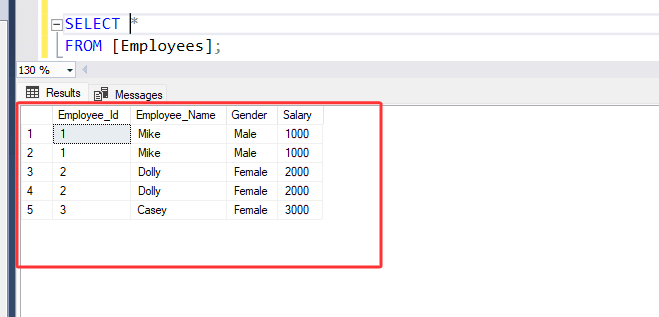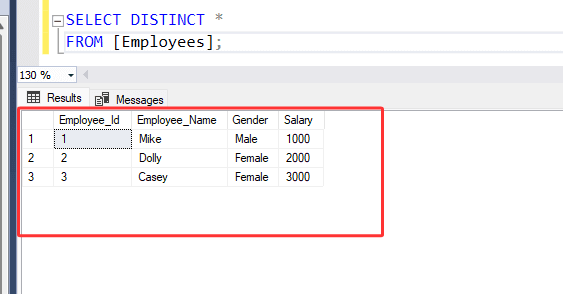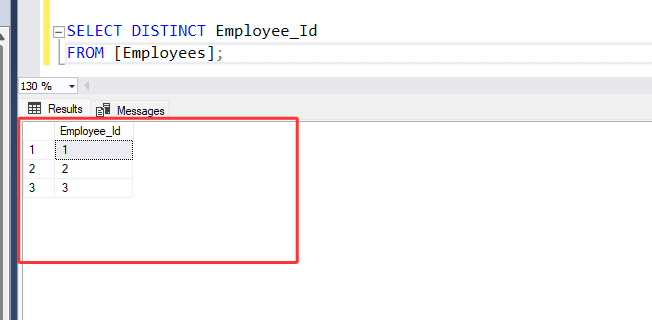Text copied!
DISTINCT clause
SQL clause is the specific part of a SQL statement which is used to perform various operations. It can be combined to create more complex queries to retrieve and manipulate data.
DISTINCT clause :
DISTINCT clause is used to eliminate the duplicate rows from the result.
It is often used with other clauses such as 'SELECT' and 'FROM' etc. to retrieve, specify table and manipulate data.
The syntax of the DISTINCT clause generally looks like this :
SELECT DISTINCT column_name(s)
FROM table_name;
• Specify the column(s) name after the 'SELECT' keyword.
• Specify Asterisk (*) symbol to selects all columns from the table after the 'SELECT' keyword.
• Specify the table name after the 'FROM' keyword.
• 'DISTINCT' keyword eliminates duplicate rows from the result.
Here's an example of how you might use the DISTINCT clause :
Suppose we have a table called [Employees] table that contains duplicate rows.

Case - 1 :
Let's assume you want to retrieve all columns with only unique rows by eliminating duplicate rows from [Employees] table.
Run below SQL statement :
SELECT DISTINCT *
FROM [Employees];
Above statement will retrieve only unique rows by eliminating duplicate rows from the [Employees] table and such all columns are retrieved with only 3 rows.

That's it! You have successfully retrieved all columns with unique rows from [Employees] table.
Case - 2 :
Let's assume you want to retrieve only Employee_Id column with unique rows by eliminating duplicate rows from [Employees] table.
Run below SQL statement :
SELECT DISTINCT Employee_Id
FROM [Employees];
Above statement will retrieve only unique rows by eliminating duplicate rows from Employee_Id column in the [Employees] table and such Employee_Id column is retrieved with only 3 rows.

That's it! You have successfully retrieved Employee_Id column with unique rows from [Employees] table.